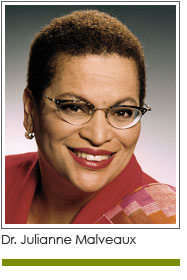 The United States Senate finally stepped up to ensure that student loan rates would not double, as might have happened. There have been weeks of back and forth, but now the Senate says they will tie student loan rates to the federal funds rate, which means that in the short run the lowest student loan rates will be 3.86 percent; this will be up slightly from 3.4 percent. At the same time, these loan rates may rise up to a rate of 8.25 percent depending on the way interest rates rise. All other loan rates - those for graduate student, for Parent PLUS loans, and others, will rise as well.
The United States Senate finally stepped up to ensure that student loan rates would not double, as might have happened. There have been weeks of back and forth, but now the Senate says they will tie student loan rates to the federal funds rate, which means that in the short run the lowest student loan rates will be 3.86 percent; this will be up slightly from 3.4 percent. At the same time, these loan rates may rise up to a rate of 8.25 percent depending on the way interest rates rise. All other loan rates - those for graduate student, for Parent PLUS loans, and others, will rise as well.
It may seem a victory that student loan rates don't rise much higher than they were in June. The connection of rates to the federal funds rate, however, connects the notion of supporting student to the oscillations of the economy. We need talented student to enter the labor force, as encumbered as they might be, whether the economy is rising or tanking. The notion that student loan rates will be tied to the federal funds rate offers students no security.
One might argue that many have no economic security. The mortgage holder with a variable mortgage is subject to interest rate fluctuations as they manage a balloon payment. Those with underground mortgages are victims of interest rate variables as they try to dig themselves above ground. Surely, though, students who are financing their education in order to invest in the healthof our nation should have different rules. When I graduated from college in 1974, interest rates hovered between 9 and 10 percent. The student loan interest rate was two percent. Why?
My cohort was no more or less brilliant than any other. We were part of our nation's plan for its future, should be the case for today's young people. Many hoped that the deal on student loan interest rates would take into account the fact that the federal funds rate (the rate to which the Federal Reserve Bank offers to banks) is well below one percent. From that perspective, even the existing rate of 3.4 percent suggests that the government is taking in more than it give out. It's complicated - there are other costs that must be considered in the lending process.
It's complicated, but shouldn't our students get as close to the same deal that banks and others get?
Allowing student loan interest rates to fluctuate, to the detriment of students in an environment when rates are certain to go up is to slap our students in the face. President Obama says he wants more students to graduate from community college or four-year institutions; we need more graduate and professional students in the science, technology, engineering, and mathematics (STEM) programs. It seems hypocritical to articulate these needs and then to undercut the means to meet them. There are more than one trillion dollars outstanding in student loan obligations.
The average student graduates with $27,000 in debt. Since nearly half of all students graduate with no debt at all, this means that the average debt for those who borrow is closer to $40,000.
Many students with a talent for organizing, human resource allocation, or classroom teaching are diverted from their goals because their first priority is to pay student loan debt. WE are starving our civil society institution, and those who would serve them, by placing money over affinity and creativity. This has been happening for decades, but the current student loan dustup reminds us that we have not provided the safe space for our young people that we should.
The Senate bill passed 80-18 with some Democrats rejecting the bill because of its flaws. Others, like the progressive Senator Elizabeth Warren (D-MA), elected as a financial whiz and people's advocate, chose to go with the one-year "okey-doke" rather than dig her heels in for the long run fight.
In some ways Warren is right. The finger in the dike approach saves students this year, and so it is better than nothing. When, though, is better than nothing simply not good enough. Stay tuned. The vote on reauthorization of the Higher Education Act will happen next year. Are students waiting and watching? What about parents? Is there a political lobby to turn this mess around?
Dr. Julianne Malveaux is a noted economist and president emeritus of Bennett College for Women.














